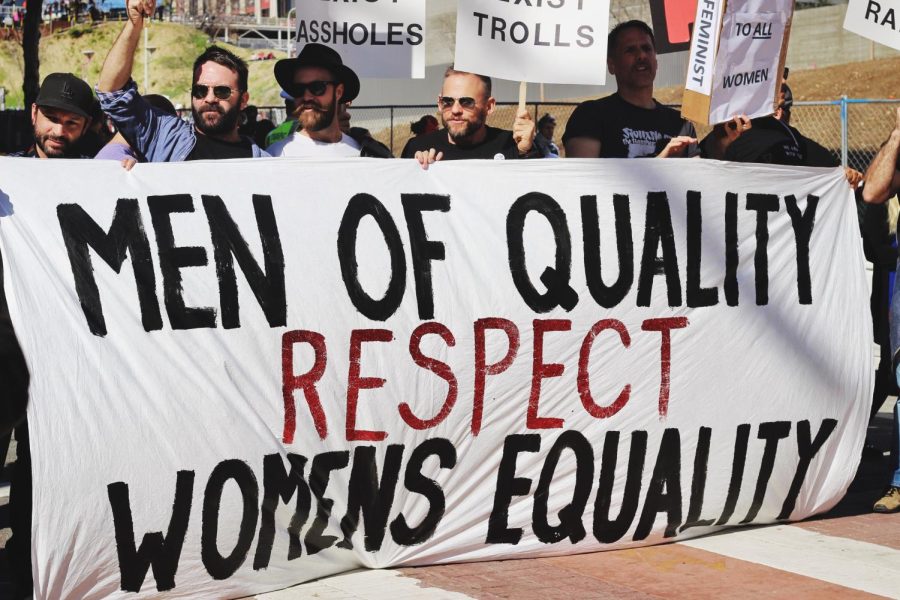Though Feminism Changes the Core Message Remains
Photo by Samantha Sophia on Unsplash
For the first time in Colorado history there is a female majority in the Colorado legislature, as they hold 51 of the 100 seats.
January 31, 2023
With the recent Women’s March in Denver, discussions about the meaning of feminism continue to transform. Many of the things that women are now fighting against in third wave feminism seem a far stretch for some in comparison to what was being fought for in the first wave of feminism.
To continue, we must first take a look back in time to the origins of feminism in the west. According to Pacific University Oregon, the first wave of feminism began in 1848 with the Seneca Falls Convention in New York, when three hundred men and women rallied for the equality of women. While at that convention, women’s rights activist Elizabeth Cady Stanton drafted the Declaration of Sentiments, which called for women’s equality and suffrage. With this first wave of feminism, many things were accomplished in women’s rights, as not only were they able to vote, but they also set the stage for future feminist actions.
Following the passage of the 19th Amendment, a woman’s right to vote, the first wave of feminism slowed down significantly. Feminism was not as popular again until around the 1960s. Among the Civil Rights Movement, anti-Vietnam movement, and many more, feminism began to gain support once again. This is defined as the second wave of feminism in which women and men band together to fight elements of the patriarchy and make it clear that they will not stop until equality is achieved. Within this wave of feminism, many doors opened for women in both education and employment.
According to History.com the third wave of feminism was in the 1990s, and its main focus was tackling issues that had not already been rectified in the earlier waves of feminism. This means adressing issues like sexual harassment in the workplace, shortages of women in positions of power, and reproductive rights.
Recently there have been many discussions of how feminism has changed over the years, and many people are associating with a certain wave of feminism, rather than feminism as a whole. This is mainly due to those who are under the belief that the core message and purpose of feminism, to advocate equality, has changed, and now it is a whole different movement.
The formal definition of feminism is the advocacy of women’s rights on the basis of the equality of the sexes. While most people are willing to agree with the origins of feminism and its meaning, this definition has been altered by different groups throughout the years. In today’s world, definitions of feminism differ from person to person, creating conflict among people as they may not understand or agree with different definitions.
“So, I think feminism is empowering women to take a stand to be viewed as equals: finally. I think it is just women’s voices and (the) fight to become equals. But then you have extreme feminists who take it above the bar, as you have extreme everything, who paint the bad light for all the other people. So, I think the problem is that one percent of the feminists who are extreme are getting all the attention and make it look bad for everybody else who is just trying to do the fair fight,” Shane Knight, Jeffco employee, said.

Recently, the YouTube channel Jubilee released a series of two videos, one with men and one with women, where they brought together feminists versus anti-feminists, and asked them a series of questions regarding modern day feminism. While there were some clear conflicts in issues regarding abortion, transgender people, and more, there were also a lot of topics both the feminists and anti-feminists could agree upon. Many of the anti-feminists voiced their beliefs of feminism and stated that they did not disagree with many of the earlier forms of feminism, but rather the new form it has taken on today. Both groups believed that women should have rights to vote and work in society, but many of the anti-feminists were fighting against diminishing a man’s role as the sole provider, which feminists are so ready to disband.
In a poll recently posted on our Cord News website, questioning what wave of feminism readers most closely align their views with, 43% said third wave, 43% said second wave, 13% said first wave, and 0% said they did not relate to any wave of feminism. For much of the population, it is not that they do not agree with feminism, it just comes down to which wave of feminism they relate to the most.
“I think modern feminism is good. We are in a changing society, and it needs to be talked about more. Guys need to be educated. Ladies need to be educated. Society needs to be educated. People are changing, the world is changing, so I think we need to change with it,” DRHS Deputy David Bruening said.
Feminism is like many other things in our society, as it is always evolving and strikes much controversy. Modern day feminism differs from past waves of feminism, but the core message surrounding equality remains unaltered.













